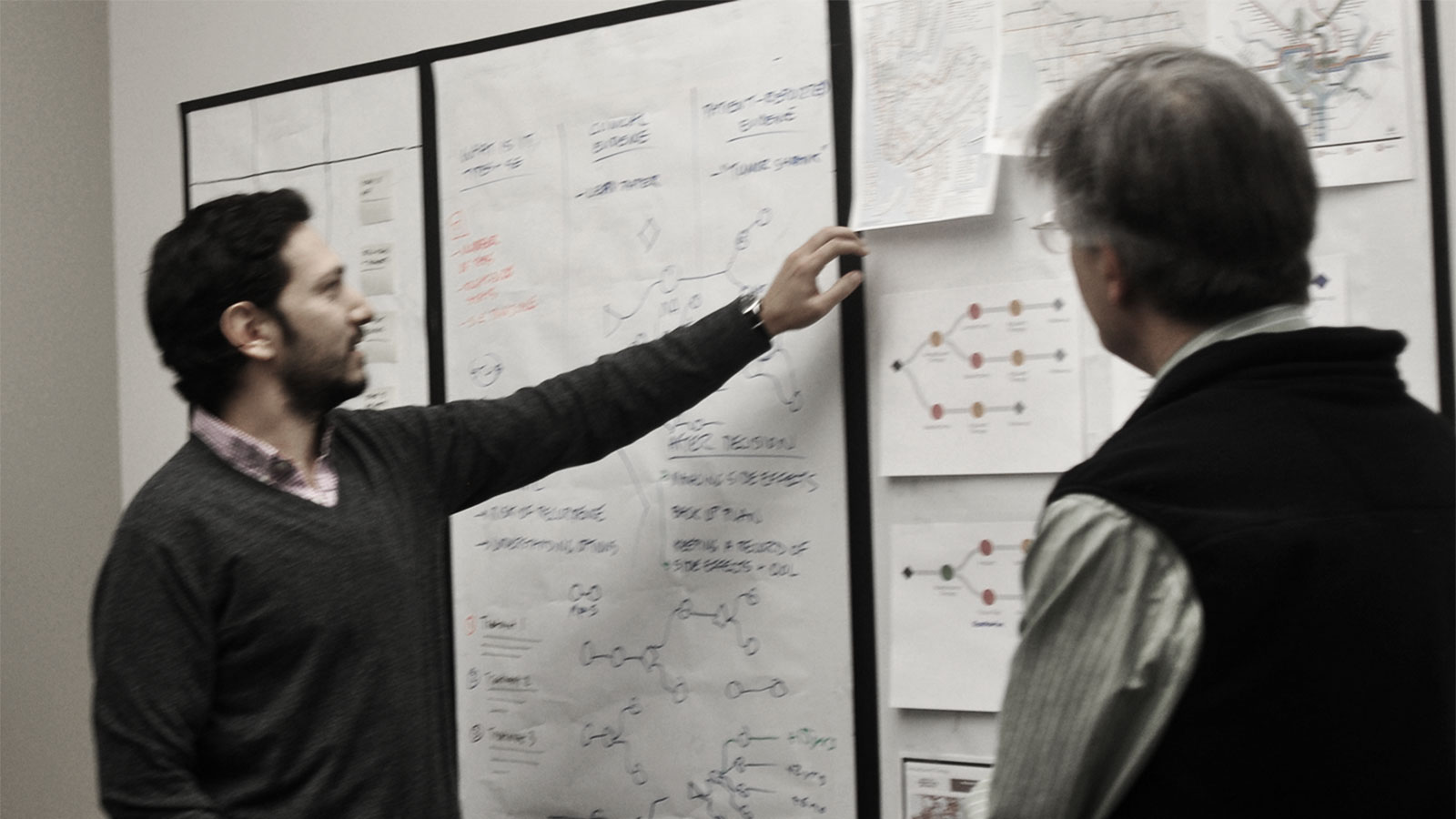
Reviewing CancerMaps concepts with IDEO’s Dennis Boyle.
Humanity-centered design prioritizes our collective well-being above any specific userbase. This contrast between human and humanity is most obvious in the nonprofit sector, where mission statements describe goals for improving the world in meaningful ways. For me, this is the kind of problem-solving that is the most rewarding, and why the majority of my career has been spent working and collaborating with nonprofits like Cancer Commons, the Center for Open Science, and the New York Academy of Sciences.
My philosophy in design (and in life, really) leans toward an inclusive and practical approach to problem-solving. Where traditional user-centered design risks getting bogged down in overly prescriptive design-thinking processes, I prefer a more pragmatic approach that is less concerned about staying in a lane and more interested in reaching the destination. In my opinion, the true genius of a solution isn’t achieved by the process. It’s achieved by the people doing creative and critical thinking together. And that is why I most enjoy working with entrepreneurs and innovators. They have an a priori vision of the world, an inherently well-developed sense of direction that sticky notes simply can’t capture.
This approach is humorously captured by the unexpected outcomes of the Marshmallow Tower Challenge:
Design thinking distilled
It’s nearly impossible to have a conversation about user-centered design without mentioning Stanford d.school’s 5-step design thinking chart of Empathize, Define, Ideate, Prototype, and Test. You’ve also probably seen variations of these in some combination of Discover, Describe, Design, Develop, Deliver, etc in circles or diamonds. They describe similar processes developed independently by companies worldwide that has been invaluable for design teams managing innovation.
The process that resonates the most with me, however, is Google Ventures’ 5-day Design Sprint, because I think it’s different in one crucial way. It relies on the stakeholders to have already identified and to an extent understand the problem they’re trying to solve. GV’s Sketch phase isn’t a big group discussion with Post-its like in a traditional design thinking brainstorm. It’s a more targeted approach with participants working through their own understanding of the problem. The inventors I work with often have this prerequisite knowledge and allows us to condense the design thinking process into the following non-linear steps:
Define it
Who are you helping and what problem needs a solution?
Make it
Create mockups or prototypes that address the problem.
Fix it
Test the designs and evolve toward that ideal solution.
Products need time to evolve with feedback from users and creativity from the product owners. Many decisions are routine and can be made safely by relying on best practices, analytics, and user testing, but that process reaches an asymptote. Some problems are just inherently complex, and well-conceived solutions still fail for a multitude of reasons. My process acknowledges the inevitability of this unknown, and as a result I think creates more space for progressive collaboration between inventors and users.
